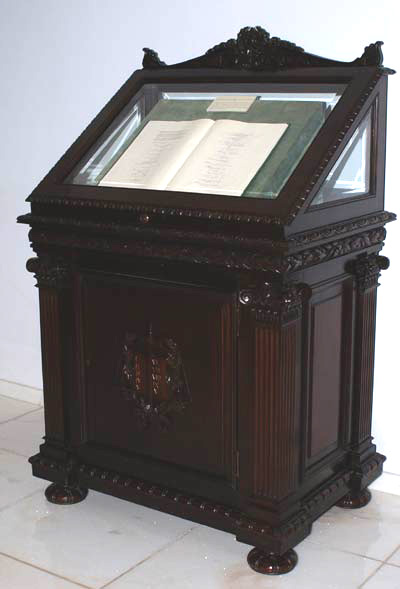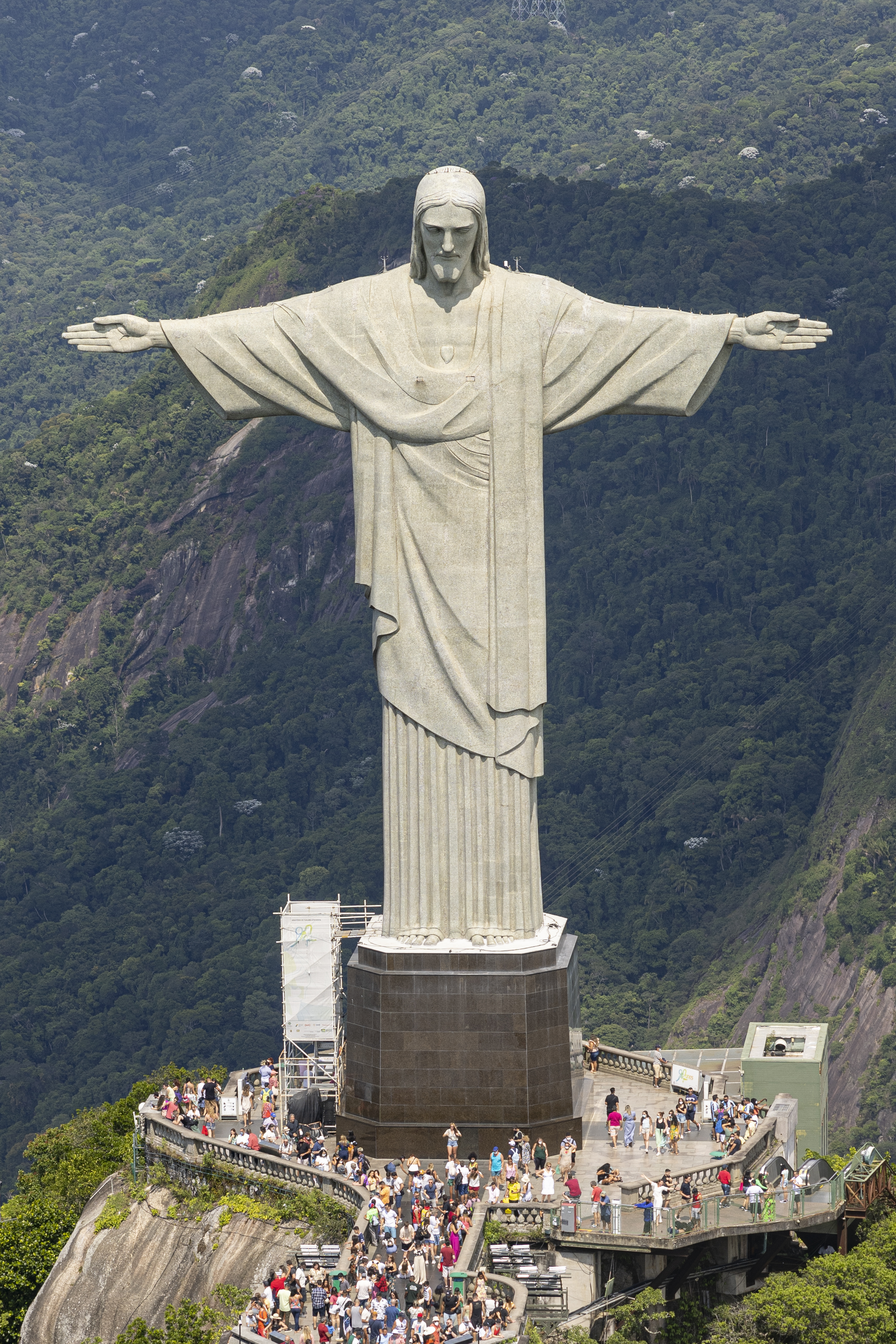|
Concordat Of 2008
The Concordat of 2008 was an agreement between the Catholic Church and Brazil, signed in the Vatican in the presence of the President of Brazil, Luiz da Silva on 13 November 2008. Some congressmen wanted to change the concordat,"Tarso defende acordo com Vaticano e diz que projeto prevê manutenção do Estado laico" (Tarso defends agreement with Vatican and says the project preserves the secular state) Folha Online, 27 August 2009 however, as with any other international treaty, once it had been signed, it could not be modified by Brazil without Vatican approval, only accepted or rejected as a whole. After much controversy it was ratified on 7 October 2009. The Association of Brazilian Magistrates opposed the concordat, as did some congressmen< ... [...More Info...] [...Related Items...] OR: [Wikipedia] [Google] [Baidu] |
Catholic Church
The Catholic Church, also known as the Roman Catholic Church, is the largest Christian church, with 1.3 billion baptized Catholics worldwide . It is among the world's oldest and largest international institutions, and has played a prominent role in the history and development of Western civilization.O'Collins, p. v (preface). The church consists of 24 ''sui iuris'' churches, including the Latin Church and 23 Eastern Catholic Churches, which comprise almost 3,500 dioceses and eparchies located around the world. The pope, who is the bishop of Rome, is the chief pastor of the church. The bishopric of Rome, known as the Holy See, is the central governing authority of the church. The administrative body of the Holy See, the Roman Curia, has its principal offices in Vatican City, a small enclave of the Italian city of Rome, of which the pope is head of state. The core beliefs of Catholicism are found in the Nicene Creed. The Catholic Church teaches that it is the on ... [...More Info...] [...Related Items...] OR: [Wikipedia] [Google] [Baidu] |
Holy See
The Holy See ( lat, Sancta Sedes, ; it, Santa Sede ), also called the See of Rome, Petrine See or Apostolic See, is the jurisdiction of the Pope in his role as the bishop of Rome. It includes the apostolic episcopal see of the Diocese of Rome, which has ecclesiastical jurisdiction over the Catholic Church and the sovereign city-state known as the Vatican City. According to Catholic tradition it was founded in the first century by Saints Peter and Paul and, by virtue of Petrine and papal primacy, is the focal point of full communion for Catholic Christians around the world. As a sovereign entity, the Holy See is headquartered in, operates from, and exercises "exclusive dominion" over the independent Vatican City State enclave in Rome, of which the pope is sovereign. The Holy See is administered by the Roman Curia (Latin for "Roman Court"), which is the central government of the Catholic Church. The Roman Curia includes various dicasteries, comparable to ministries and ex ... [...More Info...] [...Related Items...] OR: [Wikipedia] [Google] [Baidu] |
Luiz Inácio Lula Da Silva
Luiz Inácio Lula da Silva (; born Luiz Inácio da Silva; 27 October 1945), known mononymously as Lula, is a Brazilian politician, trade unionist, and former metalworker who is the president-elect of Brazil. A member of the Workers' Party, he was the 35th president of Brazil from 2003 to 2010. After winning the 2022 Brazilian general election, he will be sworn in on 1 January 2023 as the 39th president of Brazil, succeeding Jair Bolsonaro. Of working-class origin, he migrated as a child from Pernambuco to São Paulo with his family. He began his career as a metalworker and trade unionist. During the military dictatorship in Brazil, he led major workers' strikes between 1978 and 1980, and helped start the Workers' Party in 1980, during Brazil's political opening. Lula was one of the main leaders of the Diretas Já movement which demanded democratic elections. In the 1986 Brazilian legislative election, he was elected as a federal deputy in the state of São Paulo with the ... [...More Info...] [...Related Items...] OR: [Wikipedia] [Google] [Baidu] |
Concordat
A concordat is a convention between the Holy See and a sovereign state that defines the relationship between the Catholic Church and the state in matters that concern both,René Metz, ''What is Canon Law?'' (New York: Hawthorn Books, 1960 st Edition, pg. 137 i.e. the recognition and privileges of the Catholic Church in a particular country and with secular matters that impact on church interests. According to P. W. Brown the use of the term "concordat" does not appear "until the pontificate of Pope Martin V (1413–1431) in a work by Nicholas de Cusa, entitled ''De Concordantia Catholica''". The first concordat dates from 1098, and from then to the beginning of the First World War the Holy See signed 74 concordats. Due to the substantial remapping of Europe that took place after the war, new concordats with legal successor states were necessary. The post-World War I era saw the greatest proliferation of concordats in history. Although for a time after the Second Vatican Counc ... [...More Info...] [...Related Items...] OR: [Wikipedia] [Google] [Baidu] |
Constitution Of Brazil
The Constitution of the Federative Republic of Brazil ( pt, Constituição da República Federativa do Brasil) is the supreme law of Brazil. It is the foundation and source of the legal authority underlying the existence of Brazil and the federal government of Brazil. It provides the framework for the organization of the Brazilian government and for the relationship of the federal government to the states, to citizens, and to all people within Brazil. Overview The current Brazilian Constitution is the seventh enacted since the country's independence in 1822, and the sixth since the proclamation of the republic in 1889. It was promulgated on 5 October 1988, after a two-year process in which it was written from scratch. History The current Constitution of Brazil was drafted as a reaction to the period of military dictatorship, and sought to guarantee individual rights and restrict the state's ability to limit freedom, to punish offences and to regulate individual life. Among ... [...More Info...] [...Related Items...] OR: [Wikipedia] [Google] [Baidu] |
Separation Of Church And State
The separation of church and state is a philosophical and jurisprudential concept for defining political distance in the relationship between religious organizations and the state. Conceptually, the term refers to the creation of a secular state (with or without legally explicit church-state separation) and to disestablishment, the changing of an existing, formal relationship between the church and the state. Although the concept is older, the exact phrase "separation of church and state" is derived from "wall of separation between church and state", a term coined by Thomas Jefferson. The concept was promoted by Enlightenment philosophers such as John Locke. In a society, the degree of political separation between the church and the civil state is determined by the legal structures and prevalent legal views that define the proper relationship between organized religion and the state. The arm's length principle proposes a relationship wherein the two political entities intera ... [...More Info...] [...Related Items...] OR: [Wikipedia] [Google] [Baidu] |
Catechism Of The Catholic Church
The ''Catechism of the Catholic Church'' ( la, Catechismus Catholicae Ecclesiae; commonly called the ''Catechism'' or the ''CCC'') is a catechism promulgated for the Catholic Church by Pope John Paul II in 1992. It aims to summarize, in book form, the main beliefs of the Catholic Church. Redaction The decision to publish an official catechism was taken at the Second Extraordinary General Assembly of the Synod of Bishops that was convened by Pope John Paul II on 25 January 1985, to evaluate the progress of implementing the Vatican II council's goals on the 20th anniversary of its closure. The assembly participants expressed the desire that "a catechism or compendium of all Catholic doctrine regarding both faith and morals be composed, that it might be, as it were, a point of reference for the catechisms or compendiums that are prepared in various regions. The presentation of doctrine must be biblical and liturgical. It must be sound doctrine suited to the present life of Christ ... [...More Info...] [...Related Items...] OR: [Wikipedia] [Google] [Baidu] |
Candomblé
Candomblé () is an African diasporic religion that developed in Brazil during the 19th century. It arose through a process of syncretism between several of the traditional religions of West Africa, especially that of the Yoruba, and the Roman Catholic form of Christianity. There is no central authority in control of Candomblé, which is organised through autonomous groups. Candomblé involves the veneration of spirits known as ''orixás''. Deriving their names and attributes from traditional West African deities, they are equated with Roman Catholic saints. Various myths are told about these orixás, which are regarded as subservient to a transcendent creator deity, Oludumaré. Each individual is believed to have a tutelary orixá who has been connected to them since before birth and who informs their personality. An initiatory tradition, Candomblé's members usually meet in temples known as ''terreiros'' run by priests called ''babalorixás'' and priestesses called ''ialorix� ... [...More Info...] [...Related Items...] OR: [Wikipedia] [Google] [Baidu] |
Religion In Brazil
Christianity is the predominant religion in Brazil, with Catholicism being its largest denomination. In 1891, when the first Brazilian Republican Constitution was set forth, Brazil ceased to have an official religion and has remained secular ever since, though the Catholic Church remained politically influential into the 1970s. The Constitution of Brazil guarantees freedom of religion and strongly prohibits the establishment of any religion by banning government support or hindrance of religion at all levels. Brazil possesses a richly spiritual society formed from the meeting of the Catholic Church with the religious traditions of enslaved Africans and indigenous people. This confluence of faiths during the Portuguese colonization of Brazil led to the development of a diverse array of syncretistic practices within the overarching umbrella of Brazilian Catholicism, characterized by traditional Portuguese festivities. Until recently Catholicism was overwhelmingly dominant. Cha ... [...More Info...] [...Related Items...] OR: [Wikipedia] [Google] [Baidu] |
Treaties Of The Holy See
A treaty of the Holy See is called a Concordat. This is a list. 11th century *Treaty of Melfi (1059; Normans) * Treaty of Ceprano (1080) (Normans) 12th century *Concordat of Worms (1122; Holy Roman Empire) *Treaty of Mignano (1139) *Treaty of Constance (1153) (Holy Roman Empire) *Treaty of Benevento (1156; Sicily) *Treaty of Venice (1177; Holy Roman Empire, Lombard League) 13th century * Treaty of Speyer (1209) (Holy Roman Empire) *Treaty of Ceprano (1230) (Holy Roman Empire) *Treaty of San Germano (1230; Holy Roman Empire) * Concordat of the Forty Articles (1289; Portugal) *Treaty of Tarascon (1291; Aragon, France, Naples) *Treaty of Anagni (1295; Aragon, France, Naples, and Majorca) 15th century * Fürsten Konkordat between Pope Eugenius IV and the Princes Electors of the Holy Roman Empire (Jan 1447) *Concordat of Vienna (1448; Holy Roman Empire) * Treaty of Bagnolo (1489; Ferrara, Venice) 16th century *Concordat of Bologna (1516; France) *Treaty of London (1518) (France, E ... [...More Info...] [...Related Items...] OR: [Wikipedia] [Google] [Baidu] |
Religion And Politics
Religion in politics covers various topics related to the effects of religion on politics. Religion has been claimed to be "the source of some of the most remarkable political mobilizations of our times". Religious political doctrines Various political doctrines have been directly influenced or inspired by religions. Various strands of Political Islam exist, with most of them falling under 2 the umbrella term of Islamism. Graham Fuller has argued for a broader notion of Islamism as a form of identity politics, involving "support for uslimidentity, authenticity, broader regionalism, revivalism, ndrevitalization of the community." This may often take a socially conservative or reactionary from, as in wahhabism and salafism. Ideologies espousing Islamic modernism include Islamic socialism and Post-Islamism. Christian political movements range from Christian socialism, Christian communism, and Christian anarchism the left, to Christian democracy on the centre, to the Christian ri ... [...More Info...] [...Related Items...] OR: [Wikipedia] [Google] [Baidu] |
Treaties Of Brazil
A treaty is a formal, legally binding written agreement between actors in international law. It is usually made by and between sovereign states, but can include international organizations, individuals, business entities, and other legal persons. A treaty may also be known as an international agreement, protocol, covenant, convention, pact, or exchange of letters, among other terms. However, only documents that are legally binding on the parties are considered treaties under international law. Treaties vary on the basis of obligations (the extent to which states are bound to the rules), precision (the extent to which the rules are unambiguous), and delegation (the extent to which third parties have authority to interpret, apply and make rules). Treaties are among the earliest manifestations of international relations, with the first known example being a border agreement between the Sumerian city-states of Lagash and Umma around 3100 BC. International agreements were used in so ... [...More Info...] [...Related Items...] OR: [Wikipedia] [Google] [Baidu] |
.jpg)








